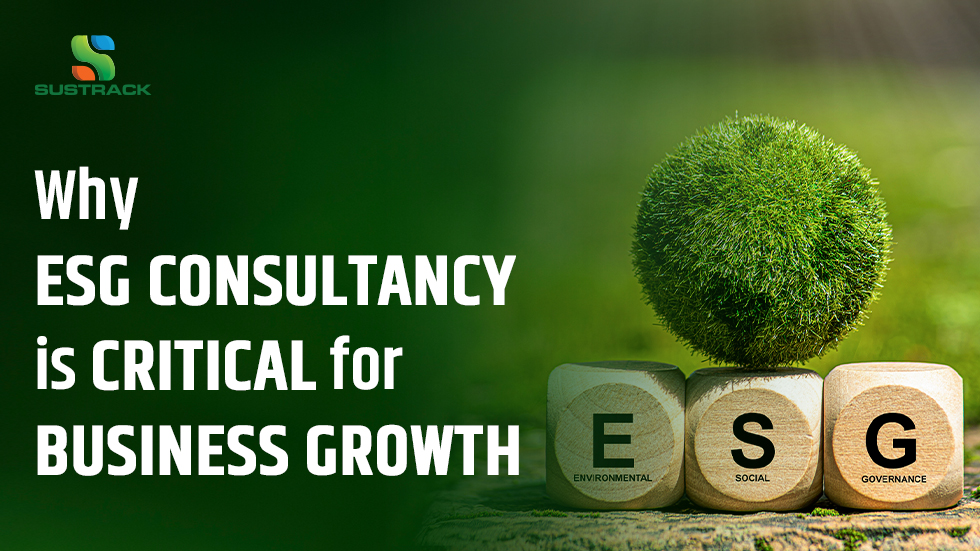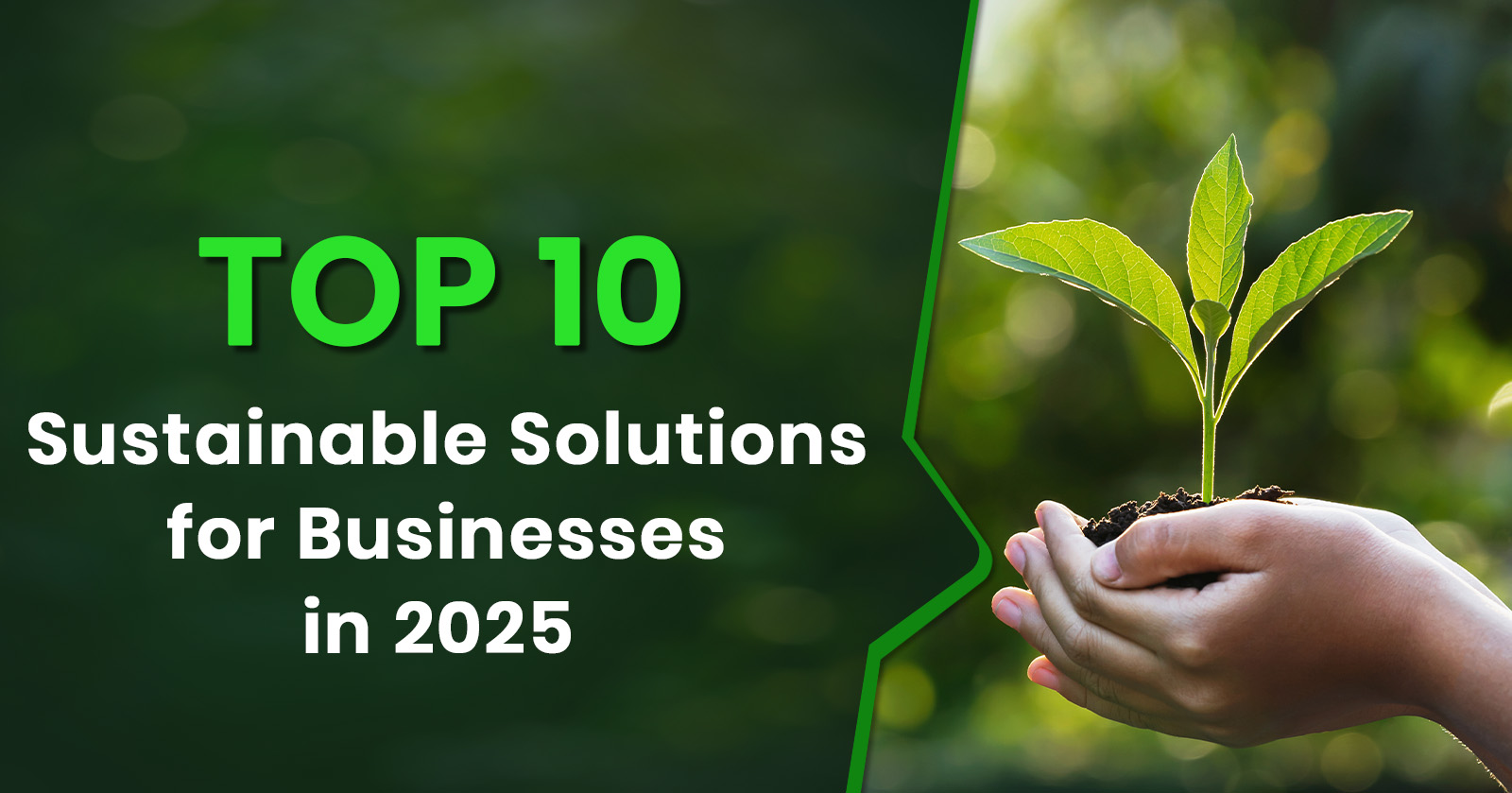Navigating ESG Reporting: A Comprehensive Guide for Businesses
Now, as we can see, the global economy is evolving in a rush. Environmental social governance

(ESG) Reporting thought has emerged as a crucial marker of long-term business value and sustainability. Everyone from investors to customers and employees demands transparency and accountability. If the stakeholders and public recognize it as a voluntary initiative from the business side, then it is depicted as a strategic imperative for businesses of all sizes and sectors.
This particular blog helps various organizations navigate the complex yet essential journey of ESG reporting. It furnishes a clear roadmap for understanding the ESG Frameworks, aligning disclosures with the international standards, and building credible, data-driven narratives that resonate with stakeholders. From recognising material ESG issues to combining ESG metrics into corporate strategy, this blog breaks down the process into actionable steps.
A matter of fact is that whether you’re a company’s owner who just kept its foot in its ESG reporting journey, or wants to refine or enhance its very existence in the market. This write-up is exactly what you are looking for. This guide offers practical insights rooted in Global Best Practices. This explores a leading framework, including the Global Reporting Initiative (GRI), the Sustainability Accounting Standards Board (SASB), the Task Force on Climate-related Financial Disclosures (TCFD), and the evolving Sustainability Reporting Standards (ESRS).
ESG reporting is an important tool for driving out the internal accountability of any company trying to enhance its goodwill in the public and among the stakeholders, plus it reduces the risks and unlocks new opportunities for growth and innovation. By embedding ESG reporting principles into the core of business strategy and operations, the business can build up resilience, strengthen stakeholder relationships and trust, and create a lasting impact.
This blog serves as your starting point for your journey to not only meeting ESG reporting expectations but also leading with purpose in a sustainability-driven world.
Importance of transparent ESG reporting for Businesses of all Sizes
The sustainable business practices should be transparent since it helps ESG reporting to go smoothly, which allows various organizations to demonstrate their commitment to ethical practices, environmental responsibility, and inclusive governance. The trust it builds among the investors, customers, regulators, and employees by showing clear-cut insights into the Company’s sustainability goals, actions, and outcomes. In some cases, it is a prerequisite for securing capital, winning contracts, and retaining talent.
Earlier, it was considered optional, but now it has become a critical part of doing business in the modern world. The investor and employees are tightening disclosure norms, and voluntary frameworks such as GRI, SASB, and BRSR are slowly becoming industry benchmarks. Companies that choose to be transparent in ESG reporting not only stay ahead of compliance but also position themselves as responsible and forward-thinking leaders in their industries.
More importantly, a transparent reporting is not just about publishing data, but it is also about providing clear explanations and context. It’s about a credible, consistent story backed by metrics, targets, and progress. For all small businesses, this might mean highlighting community impact or energy efficiency efforts, while big firms focus on complex climate risk disclosures or board diversity metrics.
The transparent Environmental Social Governance ESG reporting drives out the long-term value, enhances reputation, and empowers firms to operate with a purpose and resilience in an increasingly sustainability-focused economy.
ESG Reporting Standards and the Global Trend Towards Mandatory Reporting
What is ESG Reporting?
ESG reporting refers to the disclosure of data covering a company’s operations in three key areas: Environmental, Social, and Governance. It allows stakeholders to understand a business’s sustainability performance and ethical impact.
- Environmental: Climate change, resource use, waste, emissions
- Social: Human rights, labor practices, diversity, community relations
- Governance: Corporate governance, board diversity, anti-corruption, transparency
Major ESG Reporting Standards
Several international frameworks and standards guide ESG disclosures. Each has its focus and methodology:
| Standard | Developed by | Focused Area | Key Features |
|---|---|---|---|
| Global Reporting Initiative (GRI) | GRI | Comprehensive | Widely adopted, and it is stakeholder-focused |
| Sustainability Accounting Standards(SASB) | IFRS Foundation | Financial sector | Industry-specific, investor-oriented |
| Business Responsibility and Sustainability (BRSR) | SEBI India | ESG practices only focused on Indian Listed Companies | Generic and comprehensive. |
| Task Force on Climate-related Financial Disclosures (TFCD) | Financial Stability Board | Climate Risk | Risk Management, Governance, Scenario analysis |
| Carbon Disclosure Project (CDP) | CDP | Environment (Carbon, water, Forest) | Focuses on the carbon emissions and supply chain disclosure. |
Comparison: ESG Reporting Standards
| Aspect | GRI | BRSR | CDP | TCFD | SASB | ISSB |
|---|---|---|---|---|---|---|
| Developed By | Global Reporting Initiative | Securities and Exchange Board of India(SEBI) | Carbon Disclosure Project (CDP) | Task Force on Climate-related Financial Disclosures (TFCD) | IFRS Foundation | IFRS Foundation |
| Primary Focus | Extensive Impact of ESG | ESG Reporting & Corporate Responsibility | Environmental (Water, Carbon & Forests) | Climate-related risks and opportunities | Issues related to Financial materiality in ESG | Global Baseline for Sustainability disclosure |
| Mandatory or Optional | Optional but mandatory in a few regions | Compulsory for the Top 1000 listed companies in India only. | Optional | Mandatory on a Global Level | Optional | It is adopted on a global level. |
| Industry Specific | No | No | No | No | Yes | Yes |
Global Trend Towards Mandatory ESG Reporting
There is a clear global shift from voluntary to mandatory ESG disclosures driven by regulations, investor pressure, and climate commitments.
Mandatory ESG Reporting by Country (2025)
| Country | Mandate | Applicable to | Framework |
|---|---|---|---|
| United Staes | Partially mandatory | Public Companies | SEC rule (TCFD-aligned) |
| India | Is mandatory | Top 1000 listed companies | BRSR (SEBI) |
| Singapore | Phase wise | Listed Companies | TCFD |
| Japan | Is mandatory | Public Companies | TCFD-aligned |
| Australia | Planned | Large Businesses | TCFD/ISSB-aligned |
Key Drivers for Mandatory Reporting
- Financial Decision on Climate Risk Integration
- The demands of stakeholders & investors for transparent, comparable ESG data.
- The Government’s & stock exchange regulatory push.
- Sustainable Trends in Finance like green bonds & ESG Funds.
- The initiatives on a Global level, like the Paris Agreement and UN SDGs.
Convergence of ESG Standards
Efforts are underway to harmonise the ESG landscape:
- ISSB is creating a global baseline for ESG reporting
- EU CSRD incorporates GRI and TCFD principles
- Mandatory assurance of ESG framework data is becoming more common
- AI and digital tools will support real-time ESG analytics
The shift toward mandatory ESG reporting reflects a maturing sustainability landscape. Companies must:
- Align with global frameworks (e.g., ISSB, CSRD)
- Enhance ESG data quality and transparency
- Prepare for audits and assurance of ESG reports
Early compliance not only mitigates regulatory risks but also improves access to capital, enhances reputation, and supports long-term value creation.
Key ESG Reporting Frameworks and Standards:
The difference in the major ESG frameworks and their key relevance in various industries is as follows:
Global Reporting Initiative (GRI)
- It is initiated by the Global Reporting Initiative (well-known as an independent organisation)
- It focuses on the Stakeholder impact & sustainability outcomes across all ESG dimensions.
- This framework is globally adopted by over 10,000 companies & 100+ countries all over the world.
- It focuses on both Qualitative & Quantitative types, double materiality.
Industry Relevance
GRI is sector-agnostic and suitable for all industries, particularly for organizations with diverse stakeholder interests.
| GRI Sector Coverage | Why GRI Fits |
|---|---|
| Manufacturing & Heavy Industry | GRI basically covers energy usage, waste production, emissions, water, labour practices & supply chains. |
| Retail or FMCG Sector | It also focuses on the consumer impact, packaging & supply chain transparency. |
| Public Sectors & NGOs | GRI addresses the basic ethics and social responsibility, community development. |
| Financial Institutions | It is usually not industry-specific, but it is useful for stakeholder communication and GHG data. |
| Healthcare Sector | GRI intends to highlight the basic human rights, access to care, and ethical conduct. |
Sustainability Accounting Standards Board (SASB)
SASB covers ESG reporting relevance, which is widely referenced below:
- It was established by SASB, which is now governed by the IFRS Foundation.
- It focuses on the Financial Materiality of ESG issues for investors.
- The SASB adopts the popular investor-driven companies & publicly listed ones.
- The disclosure is usually quantitative metrics & industry-specific standards.
Industry Relevance
SASB is highly industry-specific, offering 77 sector standards.
| Industry Type | Key focuses on the SASB Focus Area |
|---|---|
| Oil & Gas | Emissions, water management, community impact, and reserves valuation. |
| Technology | Labour Practices, Data Privacy, Energy Use & Product Lifestyle. |
| Financial Services | ESG integration in portfolios, systematic risk exposure & lending practices. |
| Pharmaceuticals | R&D efficiency, access to medicine & clinical trial transparency. |
| Transportation | Fleet emissions, fuel management & safety measures. |
Task Force on Climate-related Financial Disclosures (TCFD)
- The Financial Stability Board established it.
- The focus is on the Financial impact of the Climate-related Risks & Opportunities.
- It is Mandatory in 50+ jurisdictions.
- The disclosure of the ESG Framework is narrative & scenario-based.
Key Disclosure Pillars
- The Governance keeps a tab on the oversight of the Climate risks.
- A strategy to dodge the climate-related risks and opportunities.
- Then the risk management factor of identifying & managing climate risks.
- Emissions, targets, and climate performance are the metrics & targets that need to be achieved under TCFD.
Industry Relevance
As you already know, TCFD this ESG Framework is specific to climate and applies across sectors, but is especially relevant in:
| Industry | Why TCFD Fits |
|---|---|
| Manufacturing | Climate innovation opportunities & Emission intensity. |
| Real Estate & Construction | The vulnerability of the assets to climate change, such as heat & floods. |
| Agriculture & Food | Impact on crop yield, supply chain & water disruption. |
| Insurance & Banking | Climate risk exposure through underwriting or loans. |
| Utilities & Energy | High exposure to transition and physical risks, such as decarbonisation mandates. |
Framework Suitability by Sector
We have discussed the ESG frameworks in three categories below, which are as follows:
| Framework | Sector Coverage | Best Suited Industries | Current Status |
|---|---|---|---|
| GRI | Global Coverage | Covers all sectors | It is widely adopted, but is mandatory in the EU through CRSD. |
| SASB | Only applicable in 77 industries. | Energy, Pharma, Tech, Finance, and Transportation. | It is integrated into the ISSB framework but is still used for sectoral KPIs. |
| TCFD | Globally applicable to Climate risks. | Real Estate, Energy, Finance, Agri, Heavy Industries. | Mandatory adoption in 50+ countries. |
Framework Suitability by Sector
Pros and Cons of ESG Reporting Framework
The advantages & disadvantages of the ESG framework are as follows:
| Framework | Pros | Cons |
| GRI | Broad Stakeholder-centric, it is accepted globally. | It is not industry-specific. |
| SASB | This ESG framework is industry-specific & investor-focused. | It is not stakeholder-specific & it focuses on financial materiality. |
| BRSR (India) | It is applicable only in India and is also mandatory. It is structured & principle-based as well. | This reporting is not applicable globally. |
| CDP | It is a trusted ESG framework for investors, environmentally. | It is not a full ESG Framework & and it has a high reporting burden too. |
| TCFD | This ESG framework is globally accepted for Climate risk & structured disclosures. | Implementing it is difficult & only focuses on Climate. |
| ISSB | Regulatory support is there, and it is globally done, plus it is harmonised as well. | It is still new and is less in social & governance depth. |
Choosing the Right Framework
Different companies deal in different types of industries, units, and sectors where domain-specific ESG Frameworks are required. Let’s discuss which type of ESG Frameworks are used in them; they are as follows:
| Domain Name | Frameworks Used |
|---|---|
| Engaging stakeholders & community | GRI & BRSR |
| Addressing investors & financial markets | SASB, ISSB & TCFD |
| Climate Disclosure Regulations | ISSB & TCFD |
| Enhancing Environmental Transparency | CDP & TCFD |
| Preparing for Global Harmonisation in ESG | ISSB & GRI & SASB |
| Reporting in the Indian Regulatory Environment | BRSR & TCFD & GRI |
Steps to Build an Effective ESG Reporting Process
Now, we will be discussing the steps of the ESG reporting process below:
How to collect accurate data across the environmental, social, and governance aspects?
Getting your hands on the authentic data is crucial. The data provided by the ESG reporting consultancy companies is the foundational step for any other company wanting to procure the service. The data needs to be accurate, consistent, and thoroughly verified before dispatching it to the Customer Company. The Companies want to improve their Carbon performance, establish their credibility in sustainability, and mitigate risks. This part of the blog explores how an ESG reporting consultancy collects authentic ESG framework data across the three pillars: Environmental, Social, and Governance.
Environmental Data Collection
The data related to Environmental ESG reporting majorly focuses on a company’s interaction with nature. What exactly an organisation is doing to save the Environment is the main motive here. The environmental data curated should be accurate in terms of carbon emissions, waste production, and climate risks.
Key Metrics:
- Greenhouse Gas emissions (Scope 1,2,3)
- The consumption of Energy.
- The usage of Water.
- The recycling of Waste produce.
- Biodiversity impact
- Air and water pollutants
Social Data Collection
The ‘S’ in ESG reporting stands for Social, which keeps track of the activities that can be socially harmed by the company’s activity, by emitting carbon emissions while manufacturing. So this pillar of ESG reporting maintains a healthy relationship by managing the labourers’ fair, suppliers, customers, and communities.
Key Metrics:
- The workforce diversity & inclusion.
- The employee’s health & safety.
- Labour practices and their rights
- More community engagement & impact.
- The training and development of society.
- The data privacy and satisfaction of the Customer.
Governance Data Collection
The data collection in Governance majorly focuses on the ethics, compliance, and structure of the corporation to build up trust & long-term resilience.
Key Metrics:
- Board diversity and structure
- Executive compensation
- Anti-corruption practices
- Code of conduct adherence
- ESG risk management
- Whistleblower policies
The best practices for accurate ESG reporting data collection are as follows:
1. Standardize Frameworks
Use globally recognized ESG frameworks like:
- Global Reporting Initiative (GRI)
- Sustainability Accounting Standards Board (SASB)
- Task Force on Climate-related Financial Disclosures (TCFD)
- Carbon Disclosure Project (CDP)
Standardized reporting ensures comparability and credibility.
2. Standardize Frameworks
Many ESG reporting software platforms can be used to get consolidated data from multiple channels at one time, such as a department, sites, offering dashboards, alerts, and automatic reporting.
2. Train Your Teams
To ensure that employees at all levels understand ESG reporting goals and discuss the importance of accurate data collection. Conducting may sessions regarding training for sustainability leads and data contributors.
3. Train Your Teams
To ensure that employees at all levels understand ESG reporting goals and discuss the importance of accurate data collection. Conducting may sessions regarding training for sustainability leads and data contributors.
4. Audit and Assure
There are regular internal reviews and verifications from the third party to ensure the data accuracy, completeness, and integrity.
5. Set KPIs and Benchmarks
It lays down the clear key performance indicators (KPIs) for each ESG reporting section, and the performance is compared across time and against industry peers. The authentic ESG data collection isn’t just a necessity; it’s more of a competitive advantage. The companies that implement strong data governance into their ESG framework strategy gain deeper insights, build stakeholder trust, and are prepared for future risks and opportunities. It again doesn’t matter whether you’re just starting your ESG journey or looking to refine your existing strategy; investing in high-quality data collection processes is key to unlocking long-term sustainable value.
Tools and platforms are available to streamline ESG reporting (e.g., AI-powered data analytics).
There are many tools and platforms, as discussed above, which help in generating an environmental social governance report, that streamline ESG reporting and ensure that the data collected is accurate, efficient, and managed in real-time. The tools that are used are usually AI-powered, which mostly bring out the data that is authentic and can be presented to the regulators and investors if asked for their ESG framework report.
How to Leverage ESG Reports for Stakeholder Engagement:
- Using reports to attract investors, engage customers, and maintain compliance.
- Best practices for communicating ESG framework performance to stakeholders.
Conclusion:
The future of ESG reporting is evolving fast since the expectations of the investors and stakeholders have increased. When we talk about the global trends, it indicates the shift towards mandatory and standardised disclosures. ESG frameworks such as GRI and BRSR have taken hold on a worldwide level and are gaining traction. Technology plays a vital role, with AI and blockchain enhancing data accuracy and transparency. Companies will need to integrate an ESG framework into their core business strategy, not just as a compliance measure but for long-term value creation. Greater emphasis will be placed on supply chain data, Scope 3 emissions, and real-time reporting, making ESG framework accountability a central business imperative across industries.



